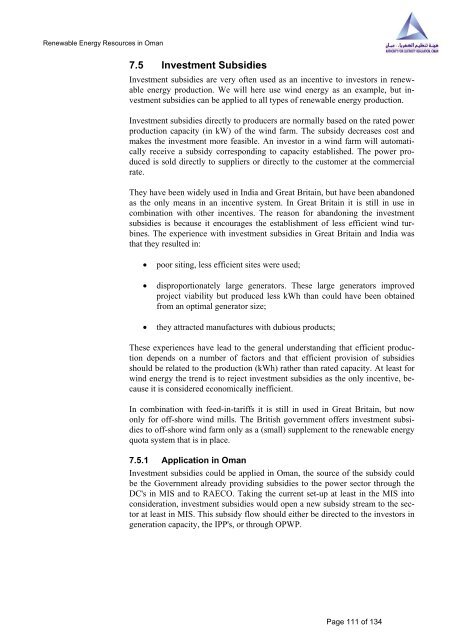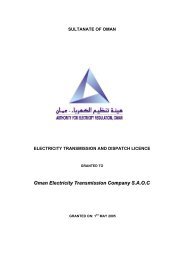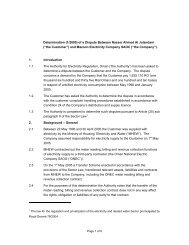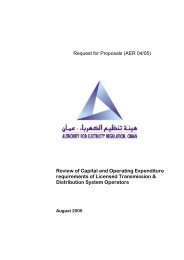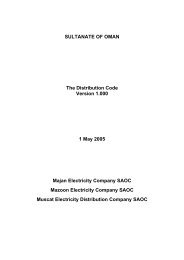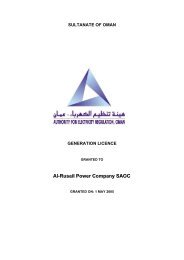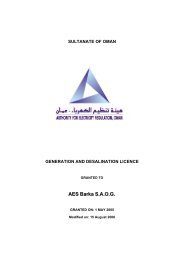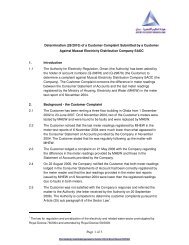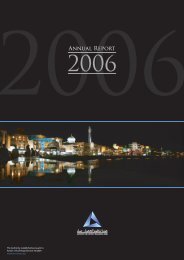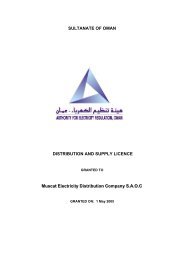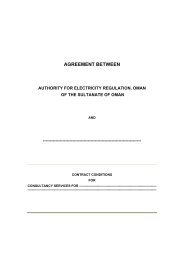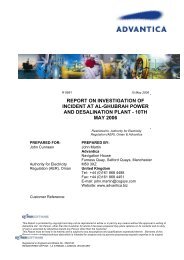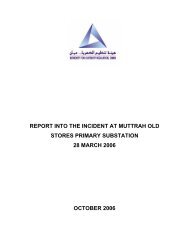Study on Renewable Energy Resources, Oman - authority for ...
Study on Renewable Energy Resources, Oman - authority for ...
Study on Renewable Energy Resources, Oman - authority for ...
You also want an ePaper? Increase the reach of your titles
YUMPU automatically turns print PDFs into web optimized ePapers that Google loves.
<strong>Renewable</strong> <strong>Energy</strong> <strong>Resources</strong> in <strong>Oman</strong><br />
7.5 Investment Subsidies<br />
Investment subsidies are very often used as an incentive to investors in renewable<br />
energy producti<strong>on</strong>. We will here use wind energy as an example, but investment<br />
subsidies can be applied to all types of renewable energy producti<strong>on</strong>.<br />
Investment subsidies directly to producers are normally based <strong>on</strong> the rated power<br />
producti<strong>on</strong> capacity (in kW) of the wind farm. The subsidy decreases cost and<br />
makes the investment more feasible. An investor in a wind farm will automatically<br />
receive a subsidy corresp<strong>on</strong>ding to capacity established. The power produced<br />
is sold directly to suppliers or directly to the customer at the commercial<br />
rate.<br />
They have been widely used in India and Great Britain, but have been aband<strong>on</strong>ed<br />
as the <strong>on</strong>ly means in an incentive system. In Great Britain it is still in use in<br />
combinati<strong>on</strong> with other incentives. The reas<strong>on</strong> <strong>for</strong> aband<strong>on</strong>ing the investment<br />
subsidies is because it encourages the establishment of less efficient wind turbines.<br />
The experience with investment subsidies in Great Britain and India was<br />
that they resulted in:<br />
• poor siting, less efficient sites were used;<br />
• disproporti<strong>on</strong>ately large generators. These large generators improved<br />
project viability but produced less kWh than could have been obtained<br />
from an optimal generator size;<br />
• they attracted manufactures with dubious products;<br />
These experiences have lead to the general understanding that efficient producti<strong>on</strong><br />
depends <strong>on</strong> a number of factors and that efficient provisi<strong>on</strong> of subsidies<br />
should be related to the producti<strong>on</strong> (kWh) rather than rated capacity. At least <strong>for</strong><br />
wind energy the trend is to reject investment subsidies as the <strong>on</strong>ly incentive, because<br />
it is c<strong>on</strong>sidered ec<strong>on</strong>omically inefficient.<br />
In combinati<strong>on</strong> with feed-in-tariffs it is still in used in Great Britain, but now<br />
<strong>on</strong>ly <strong>for</strong> off-shore wind mills. The British government offers investment subsidies<br />
to off-shore wind farm <strong>on</strong>ly as a (small) supplement to the renewable energy<br />
quota system that is in place.<br />
7.5.1 Applicati<strong>on</strong> in <strong>Oman</strong><br />
Investment subsidies could be applied in <strong>Oman</strong>, the source of the subsidy could<br />
be the Government already providing subsidies to the power sector through the<br />
DC's in MIS and to RAECO. Taking the current set-up at least in the MIS into<br />
c<strong>on</strong>siderati<strong>on</strong>, investment subsidies would open a new subsidy stream to the sector<br />
at least in MIS. This subsidy flow should either be directed to the investors in<br />
generati<strong>on</strong> capacity, the IPP's, or through OPWP.<br />
Page 111 of 134<br />
.


